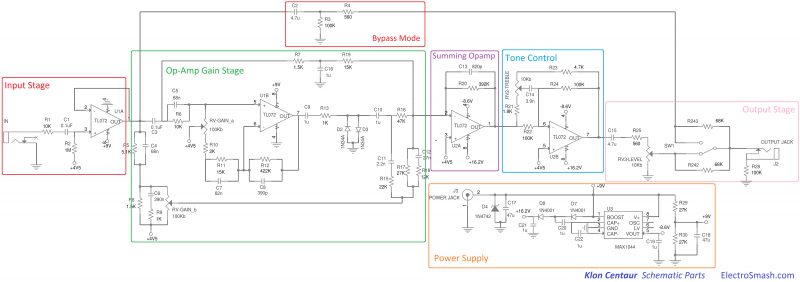When I picked up the guitar again a couple of years ago this image grabbed my attention.

At some point I decided to look it up and was mildly fascinated by the story behind it. From the initial success story, through the mythology around those damn diodes, to the DIY pedal community buying one for a ridiculous sum, stripping it down and reverse engineering it and finally to where it is now with the KTR and the host of klones (I find that name more amusing than I’d prefer to admit), it piqued my interest… oh, and Mr. Bill Finnegan, that ridiculous hype is absolutely of your making… well done sir.
Anyway… when I decided to try my hand at pedal building it was always going to be a klone. Truth be told I know nothing about overdrive pedals and the only one I’ve ever used personally is the TC MojoMojo so I should probably have done a little more research rather than selecting based on a story… but I like the story and I can always build another one if I want to. ?
As it turns out, the klon is a relatively complicated overdrive pedal and not generally recommended for a first build, but that seems to be my pattern, so why break it?
For anyone interested, here is a site that gives a pretty good analysis of the circuit and how it works.
https://www.electrosmash.com/klon-centaur-analysis
I decided to use the schematic from that site as the basis for my build. I probably should have spent a little more time investigating alternatives since there do seem to be some variations, but frankly I’m ready to start building now (noticing a pattern?). ?
I have found a couple of issues with the schematic (9V on the right of the power supply should be 4.5V and polarity hasn’t been marked on the electrolytic capacitors) but in general it looks solid.

A minor hiccough at this point is that the original Klon Centaur was a chunky pedal and a lot of the klones use modern PCB design to achieve their small footprint. The only tech I have at my disposal is the mighty veroboard and for whatever reason I’ve got it into my head that I want to build it into a standard sized pedal so I’ve got a bit of an engineering challenge. I’ve done a basic layout of the circuit and I think that I should be able to get it right… time will tell.
So where am I now?
Well, I believe that I finally have all the components and am just about ready to begin.
I still need to spend about an hour or so making sure that my layout actually matches the schematic and am hoping to get the first components into the board either tonight or tomorrow night. Once the board is completed I plan to wire up the pots, switches, jacks etc. and test that everything works before taking drill to metal and installing. At the moment I have no plans for styling on the pedal. First make it work… then make it pretty. ?